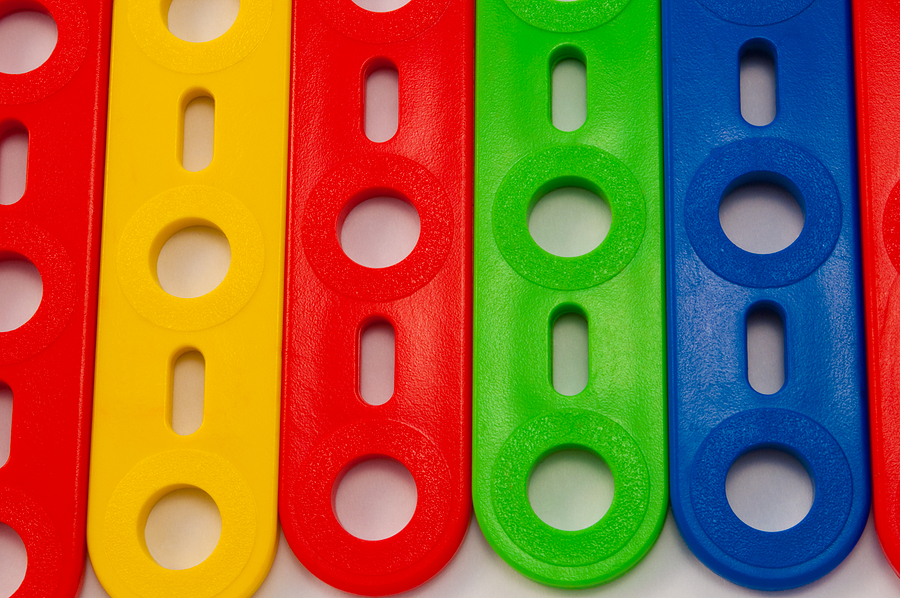Color is a critical component in many products. From a branding perspective, it contributes to recognition and reputation. Creating vibrant plastic parts also allows buyers to express their style. From home appliances to automobile interiors, consumers perceive a sense of luxury, ruggedness, simplicity or trust based on the color of a manufacturer’s product.
Vibrant colors can also enhance the safety and recognition of a product. For example, manufacturers generally use a yellow polymer when producing gas pipes. A manufacturer may produce a bottle in a solid black to protect the contents from UV damage. Color serves both a practical and aesthetic purpose for plastic parts.
However, not all plastics are created equal. What plastics work best for creating vibrant plastic parts? Let’s look at three.
Select the Most Compatible Material
A material’s properties directly impact its application possibilities and part moldability. Ultimately, the goal is to achieve the desired finish while retaining the durability native to the plastic. It’s critical that you ensure that there is chemical compatibility between the chemistry of the polymer and the chemistry of the colorant. The following are three plastics we’ve found to work well to create vibrant plastic parts.
-
Acrylonitrile Butadiene Styrene (ABS)
ABS describes an amorphous polymer made up of three monomers which bear its name. It’s durable, impact resistant, flame retardant and high pressure resistant. It retains all those characteristics even after adding color during the injection molding process. Think LEGO! These brightly colored pop culture icons are a great example of ABS. This durable plastic is also a popular choice for keyboard keys, gauges, housings, wall switches, wheel covers, and many other common commercial and domestic products. The key to ABS color retention is that it has a low melting point, making it ideal for the injection molding process. Manufacturers also prefer it because it falls in the low to medium price range.
-
ABS/Polycarbonate (PC)
This type combines the above advantages of ABS with PC. This combination produces a synergic effect that results in superior impact resistance at low temperatures. They are ideal for products that might see a broad range of temperatures. The result is a stiff material that is easy to process and has low overall shrinkage. Color can easily be customized, and printed logos or text can be added. You’ll often see this plastic used in automobiles, including the middle console, glove box, instrument panel and many other structural components. Frequently, manufacturers use ABS/PC for mobile phone bodies, LCD panels, keypads, and adapters and chargers.
-
Polypropylene (PP)
Polypropylene is a material family that is lightweight, impact resistant, flexible and naturally waxy. It’s one of the lowest priced plastics available and one of the most widely used, both in household and industrial items. MarketWatch predicts the global PP market will reach $120.11 billion by 2026. You’ll find PP around your house in toys, cups, plates and containers. Automotive manufacturers use it for bumpers, trim, covers and much more. Its processing temperatures are relatively low, making it ideal for color stability since color shift often occurs at high temperatures.
Focus on Good Property Retention
Developing a new color is not just about aesthetics. While manufacturers often focus on the marketing advantages of vibrant colors, as color levels rise the chance the material’s performance will decline increases. Once a suitable material is chosen, great care must also be taken as to how much colorant is added.
Choose a plastics manufacturer familiar with the effects of colorant on plastic injection molded parts. Proto Plastics understands the goal is to achieve the desired finish while retaining the durability and other valued properties of the original plastic. Contact us to learn more about our custom process.

